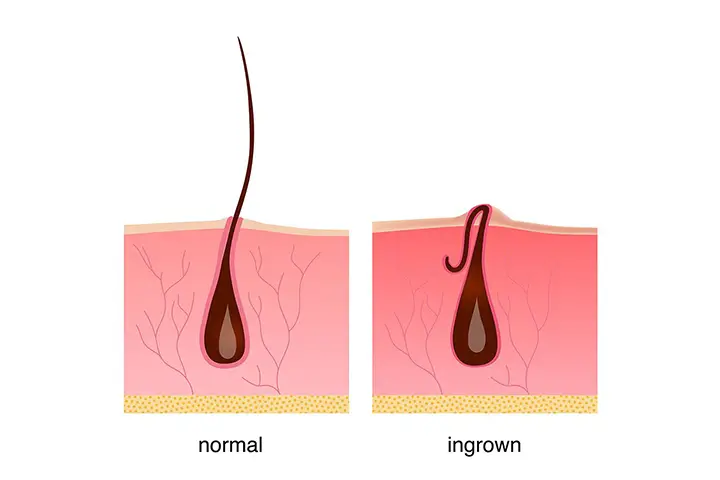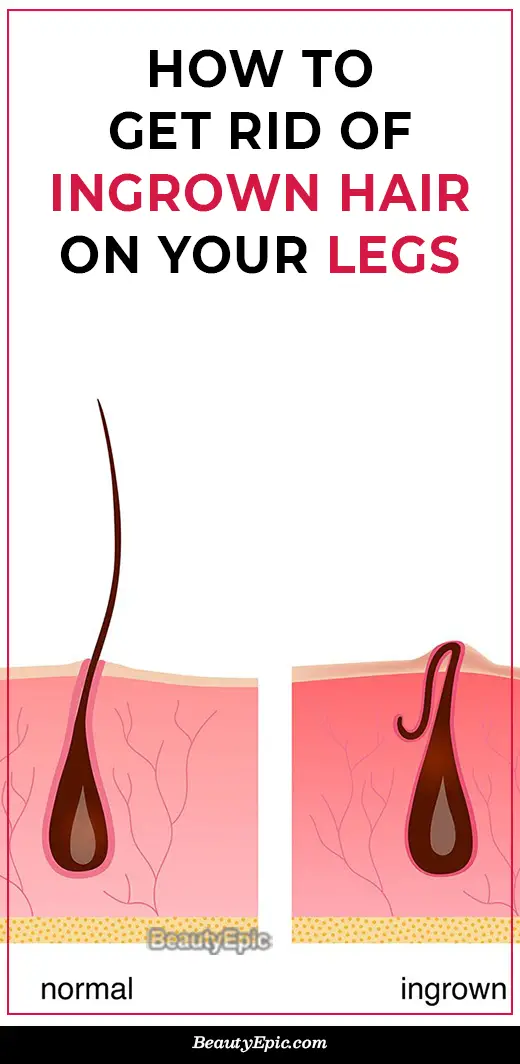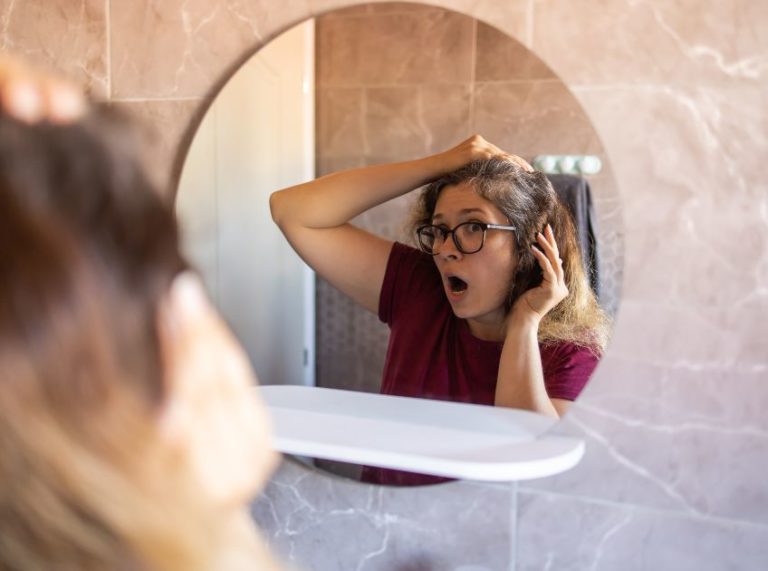
Important: This article is for informational purposes only. Please read our full disclaimer for more details.
After shaving your legs, sometimes, some hair doesn’t rise but grows back into the skin, causing inflammation. This is termed ingrown hair. It generally occurs because the hair is forced to grow sideways instead of coming up due to dead skin clogging the hair follicles. Sometimes, people having curly hair also face this as the sharper end of the hair pierces the skin resulting in ingrown hair.
How to Remove Ingrown Hair?
Here are the steps to be followed for safely removing the ingrown hair:
- Clean the area gently with some warm water and mild soap.
- Try exfoliating it if you do not have any irritation.
- In order to open up the hair follicle and let it drain, use a warm and wet washcloth on the ingrown hair. Let it remain for 1 minute before removing it.
- Then use a sterilized needle or tweezer for teasing out the ingrown hair. Once it comes up to the surface, grab its base with the tweezer and firmly pull upward for removing it.
- Use some warm soapy water to clean it.
- If irritation persists, keep a warm, wet cloth on the area.
- Avoid picking out the hair when it is still under the skin as it can push the hair further deep into the skin or even cause infection. This will take a lot of time to heal.
[ Read: How to Use Baking Soda for Ingrown Hair ]
Avoiding Growth of Ingrown Hair:
Here are the ways of safely removing ingrown hair:
1. Exfoliation:
Since hair follicles getting blocked is an important cause for the formation of ingrown hairs, you need to remove the dirt and dead skin through exfoliation. So whenever you want to shave, first exfoliate with a loofah and an exfoliating body wash. This will get all the pores unclogged and hairs will start growing in the right way.
2. Dry Bushing:
This is another way of removing the dead skins using a firm brush with long bristles. Move it in a circular motion to remove the dead skin cells and let the softer skin underneath be revealed.
3. Using Shaving Gel:
Shaving cream or shaving gel should be used to ensure a frictionless shaving experience. Also, it adds moisturization to the skin because of which irritation and inflammation don’t occur. Those having sensitive skin should carefully check the ingredients in the shaving gel or cream to avoid any unwanted reaction.
Sometimes the chemicals and fragrances in these products lead to inflammation and irritation, resulting in ingrown hairs, so products with natural ingredients are the best.
[ Read: How to Use Aspirin for Ingrown Hair ]
4. Use The Right Razor and Shaving Technique:
Using razors with blunt edges can pull the hairs resulting in ingrown hairs. This might also lead to cuts, causing infection.
So make sure to replace it regularly so that it easily glides on the skin, without leaving any half-shaved hairs.
Besides this, make sure that the razor is rust-free.
It is better to rinse the razors and clean them with rubbing alcohol after every use. Let the hair grow for some time before shaving, i.e shave less frequently.
5. Shaving in The Hair Growth Direction:
Hairs grow with very sharp tips when you shave them in the direction opposite to their growth. Due to this, they can easily enter the skin and grow inwards. So it is recommended to shave in the same direction in which the hair grows.
6. OTC Treatment:
Doctors may recommend some OTC cream or treatments for those who often have ingrown hairs. Such products have ingredients as those in acne medications. This includes salicylic acid, benzoyl peroxide, and glycolic acid.
They work by removing the dead skin cells and getting the pores unclogged to prevent ingrown hairs.
Other products might get the hair out of the skin to reduce infection. Sometimes moisturizers are recommended to prevent the skin from getting dried up and inflamed through itching.
7. Waxing:
Waxing eliminates the issues which occur with shaving. This takes more time for the hair to grow and they occur as finer hair instead of coarser once. But waxing doesn’t 100% assure freedom from ingrown hairs, so to avoid this, the waxed area should be kept hydrated.
Brittle hair grows when the skin is dry and when this is pulled out, it doesn’t come up entirely. Besides this, clothes rubbing against dry and waxed skin can also cause ingrown hairs, so it is recommended to avoid wearing tight-fitting clothes for at least 1 day after waxing.
Final Words:
Ingrown hair is a painful situation that causes a lot of discomforts, so it is essential to follow all the ways above to prevent them from occurring. In extreme cases, visit the dermatologist for the right treatment process.
You Might Also Like:
- 5 Ways to Get Rid Of Prickly Hair After Shaving
- Why Does My Leg Hair Grow So Fast?
- How to Use Baking Soda for Hair Removal
- Should I Shave Before or After Showering?
- How to Get Rid of an Ingrown Toenail at Home?
- The 7 Best Remedies for Ingrown Toenails
- Does Waxing Help With Ingrown Hairs?
- Baking Soda for Ingrown Hair – Does it Work?
- How to Get Rid of Ingrown Hairs on Legs
- 5 Best Fur Oil Ingrown Hair Alternatives
- How to Get Rid of Ingrown Hairs with Aspirin
















